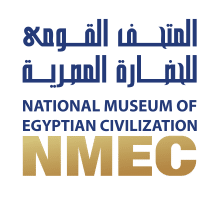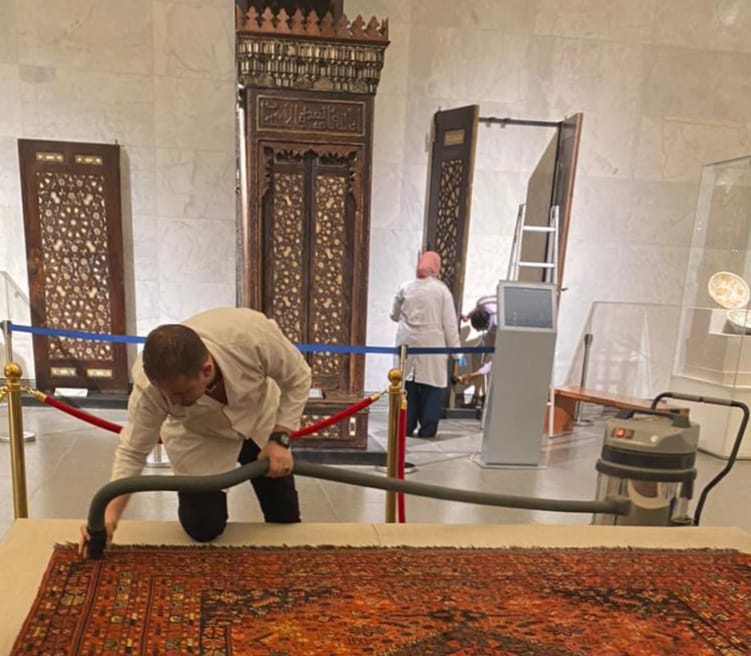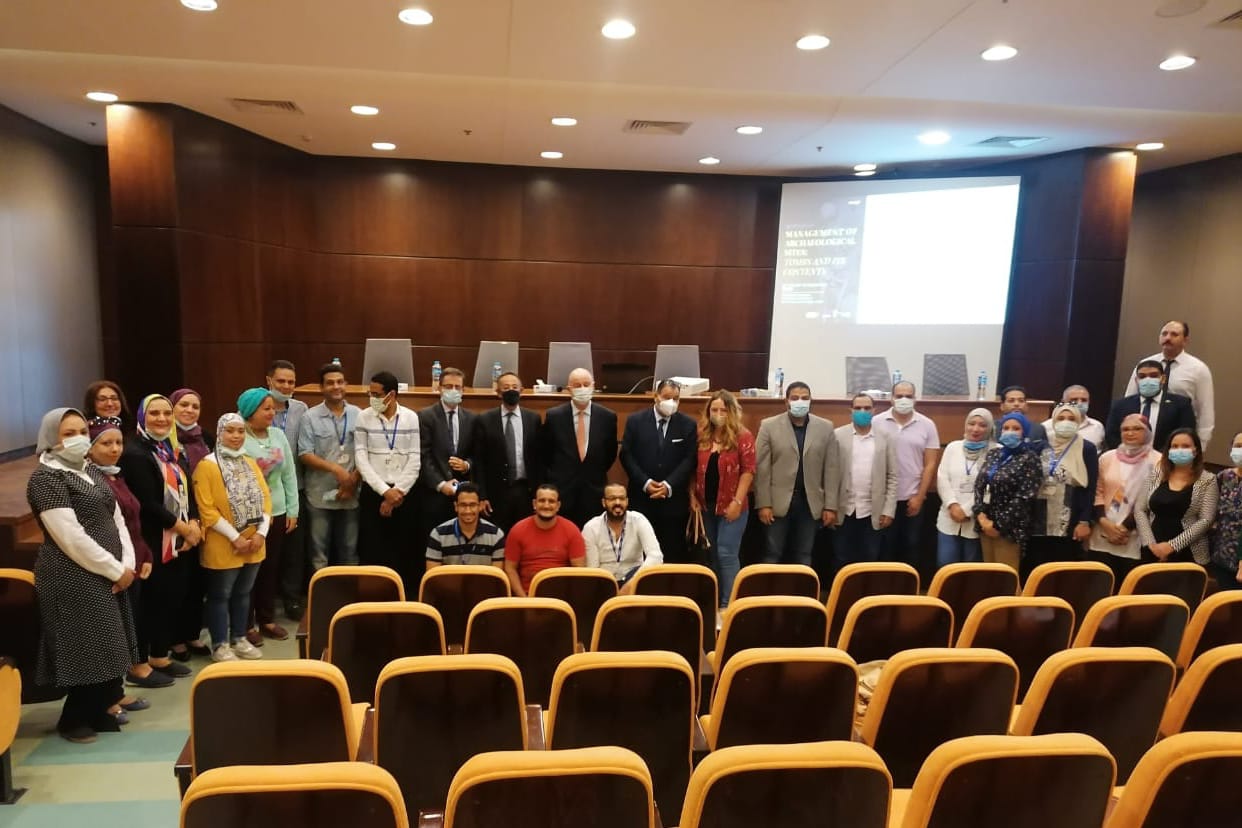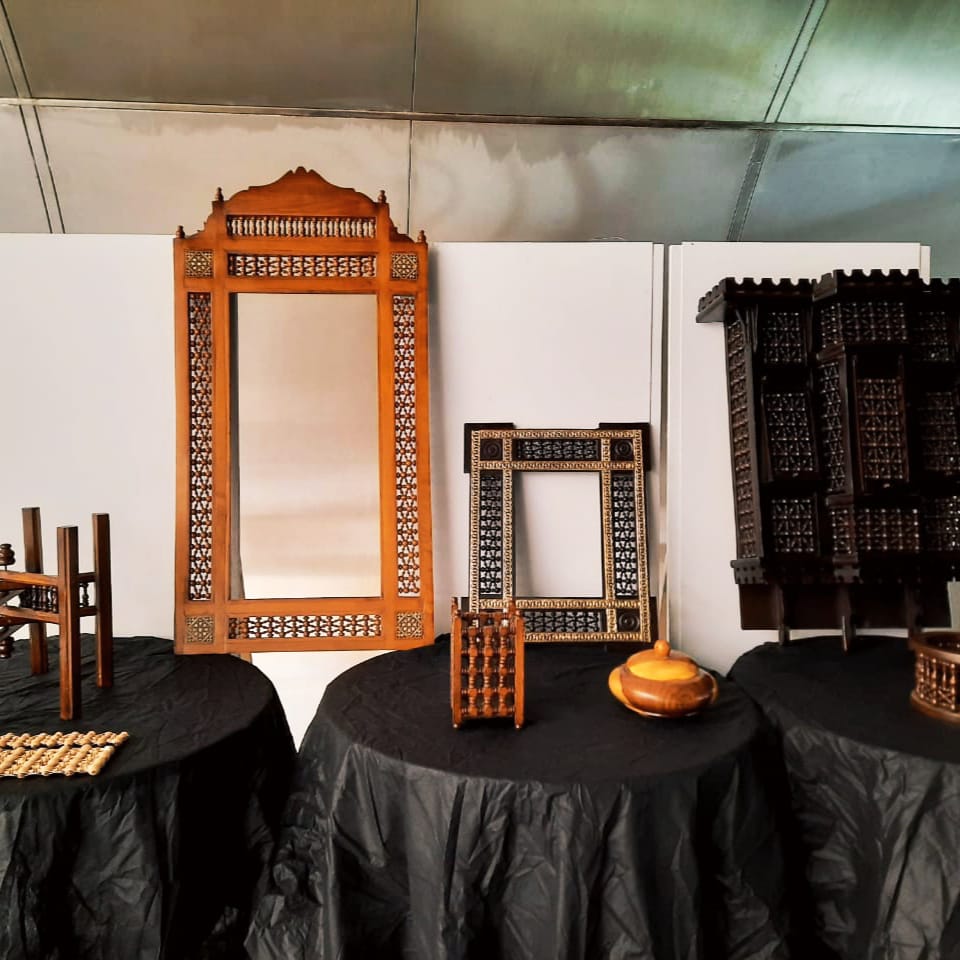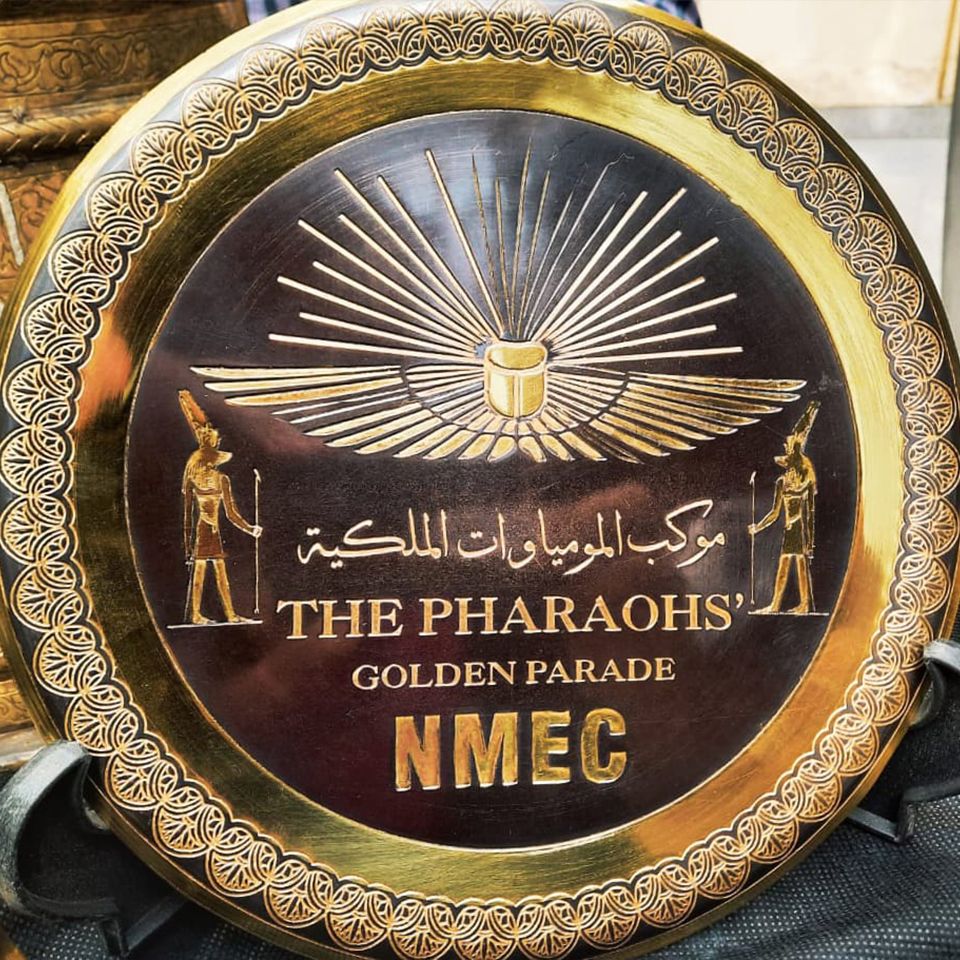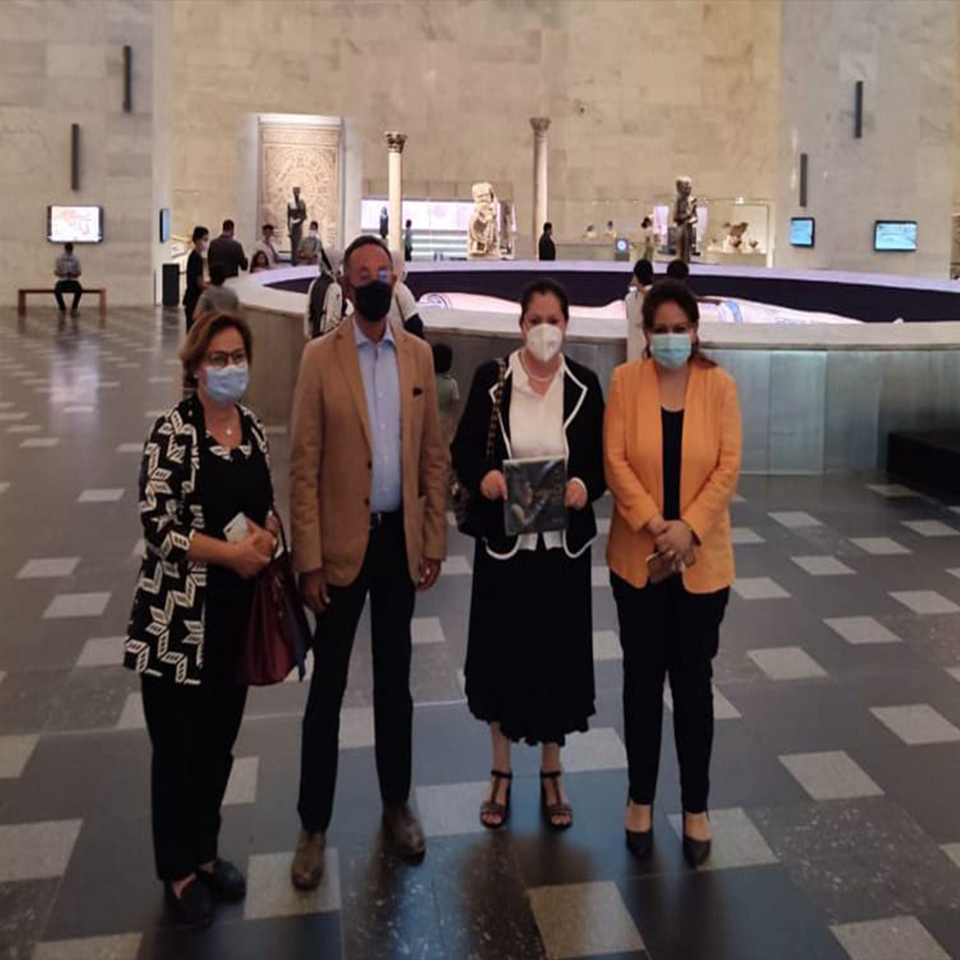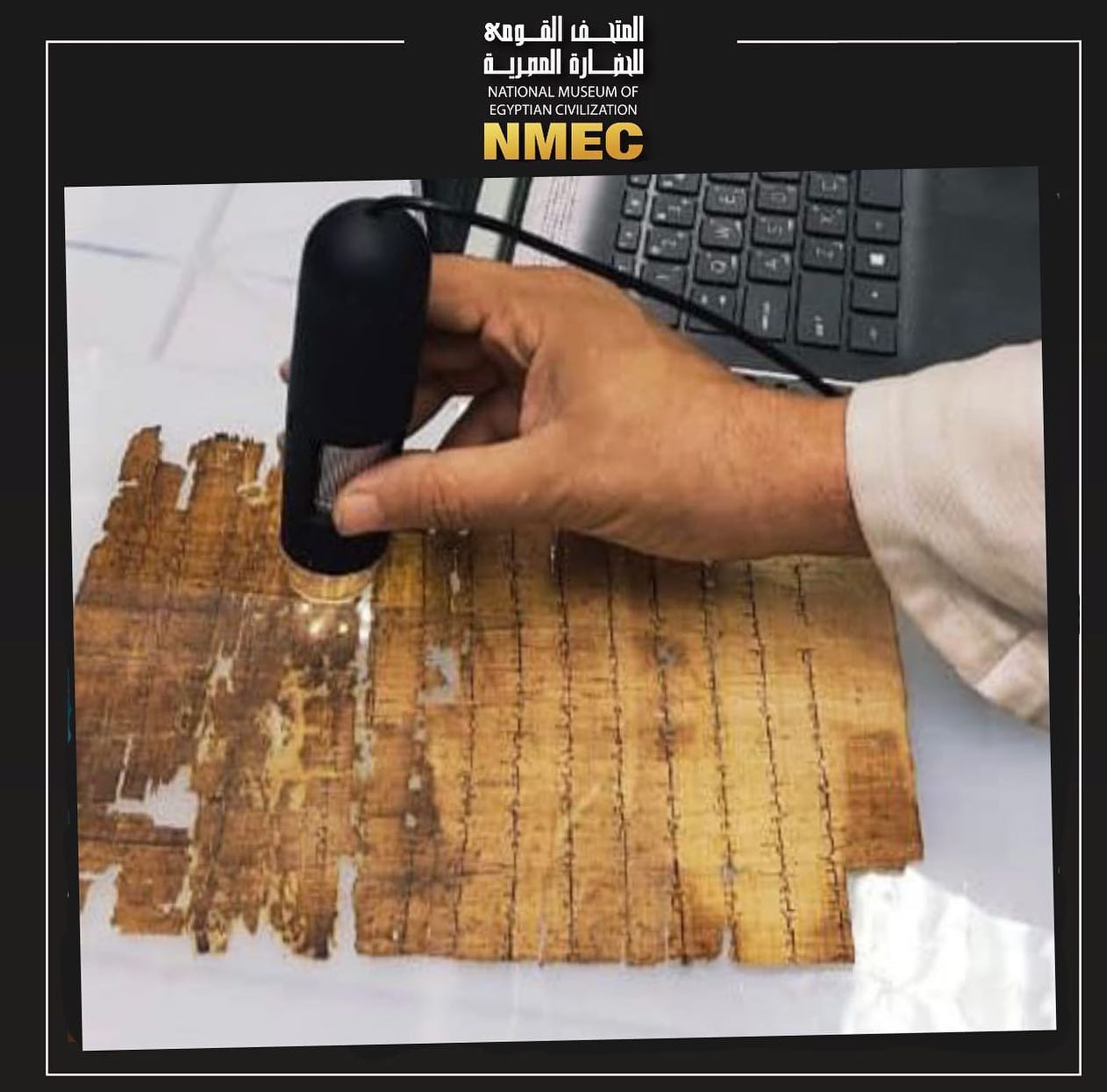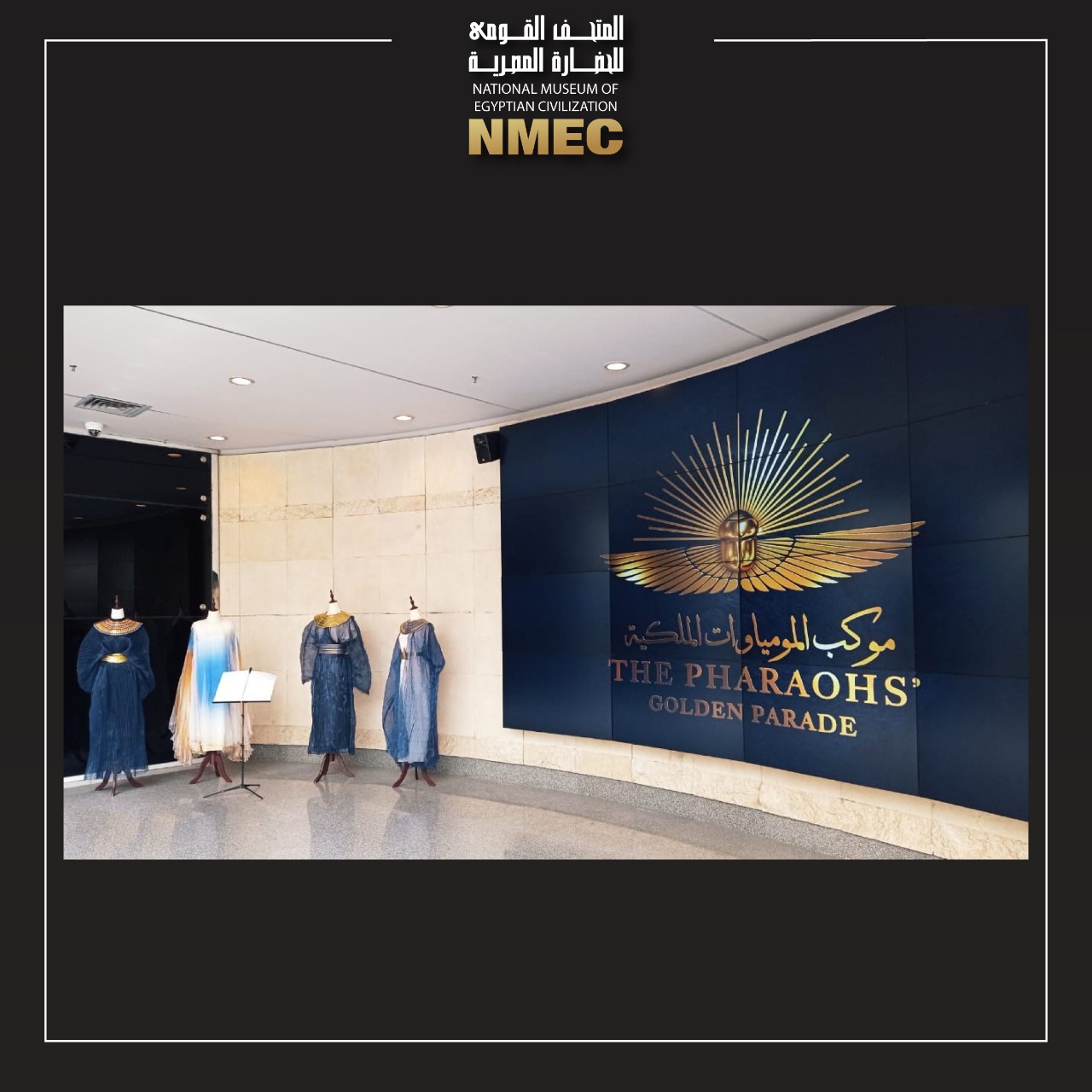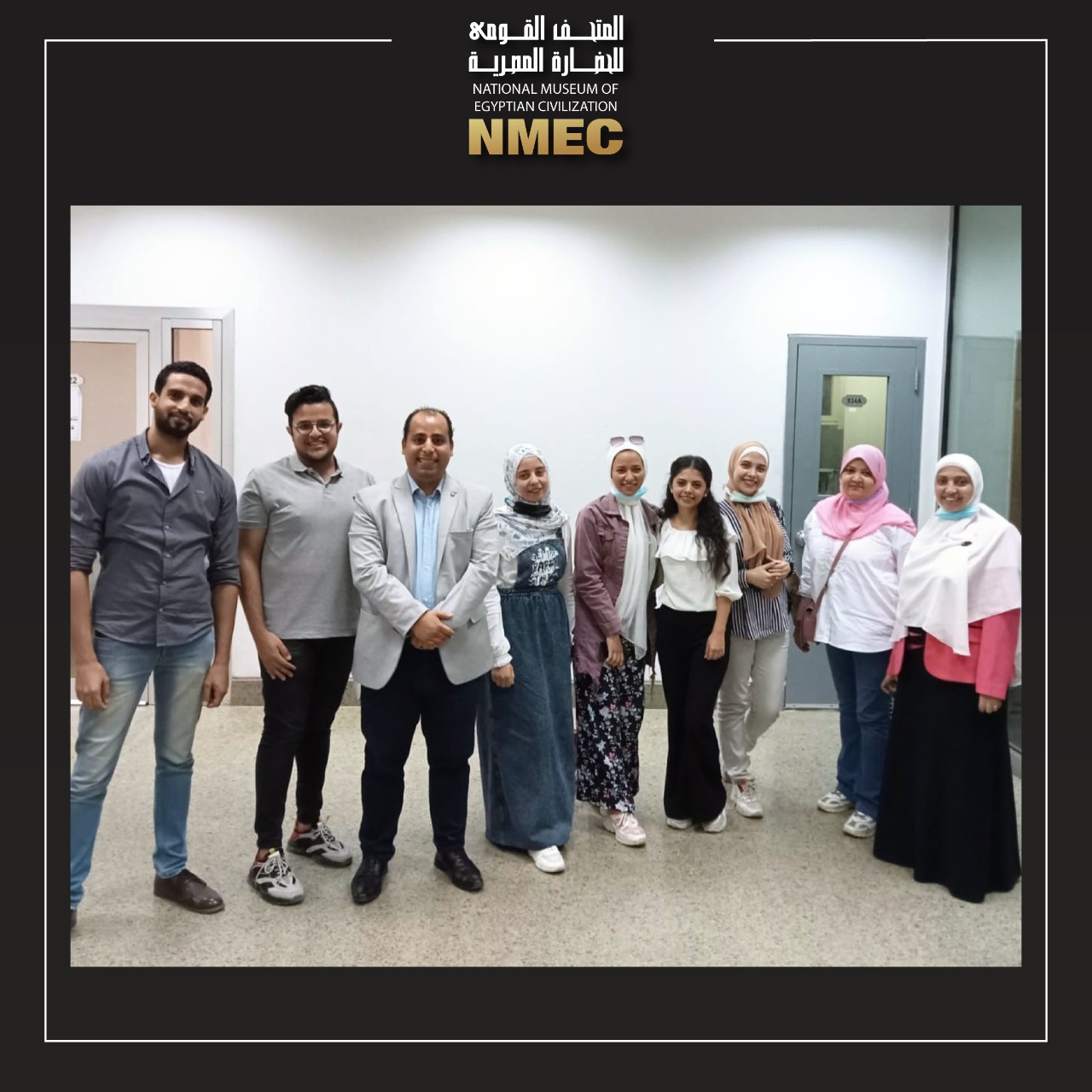Within the framework of the National Museum of Egyptian Civilization’s strategy to raise the efficiency and refine the employees’ capabilities in their various specialties, the NMEC’s Conservation Center organized a training session for the NMEC’s archaeologists and archaeological trustees. The session included lectures on IPM strategies, and the best methods used to detect, and prevent microbiological damage at the museum’s storages, and its exhibition halls. The series of lectures were delivered by Mr. Ayman Khaled, a specialist in manuscript restoration, Ms. Rasha Muhammad, a specialist in pottery restoration, Mr. Sharaf Muhammad, a microbiologist, and Ms. Hayam Samy, an entomologist and Head of the anoxia unit at the NMEC.
Moreover, Mr.Yehia Hussein, the Head Director of Metallic Conservation Lab, has practically trained the team of archeologists on the most proper methods of handling the archeological pieces.
It is worth-mentioning that such sessions are designed to improve the skills and capabilities as well as to raise the potentials of the NMEC’s the employees’, in their various fields.
On the other hand, and within the role performed by the Conservation Center at the NMEC, the restorers and the team of conservators have carried out the periodic maintenance of the artifacts displayed outside the vitrines. This also comes within the framework of the periodic maintenance of the artifacts displayed at the Core Exhibition Hall in order to preserve and maintain them.
Dr. Ahmed Farouk Ghoneim, Head of the NMEC’s Authority, emphasized that the successful national and international reputation have been achieved by profound efforts made by all the NMEC’s employees to develop the museum and transform it into a first-class tourist destination
